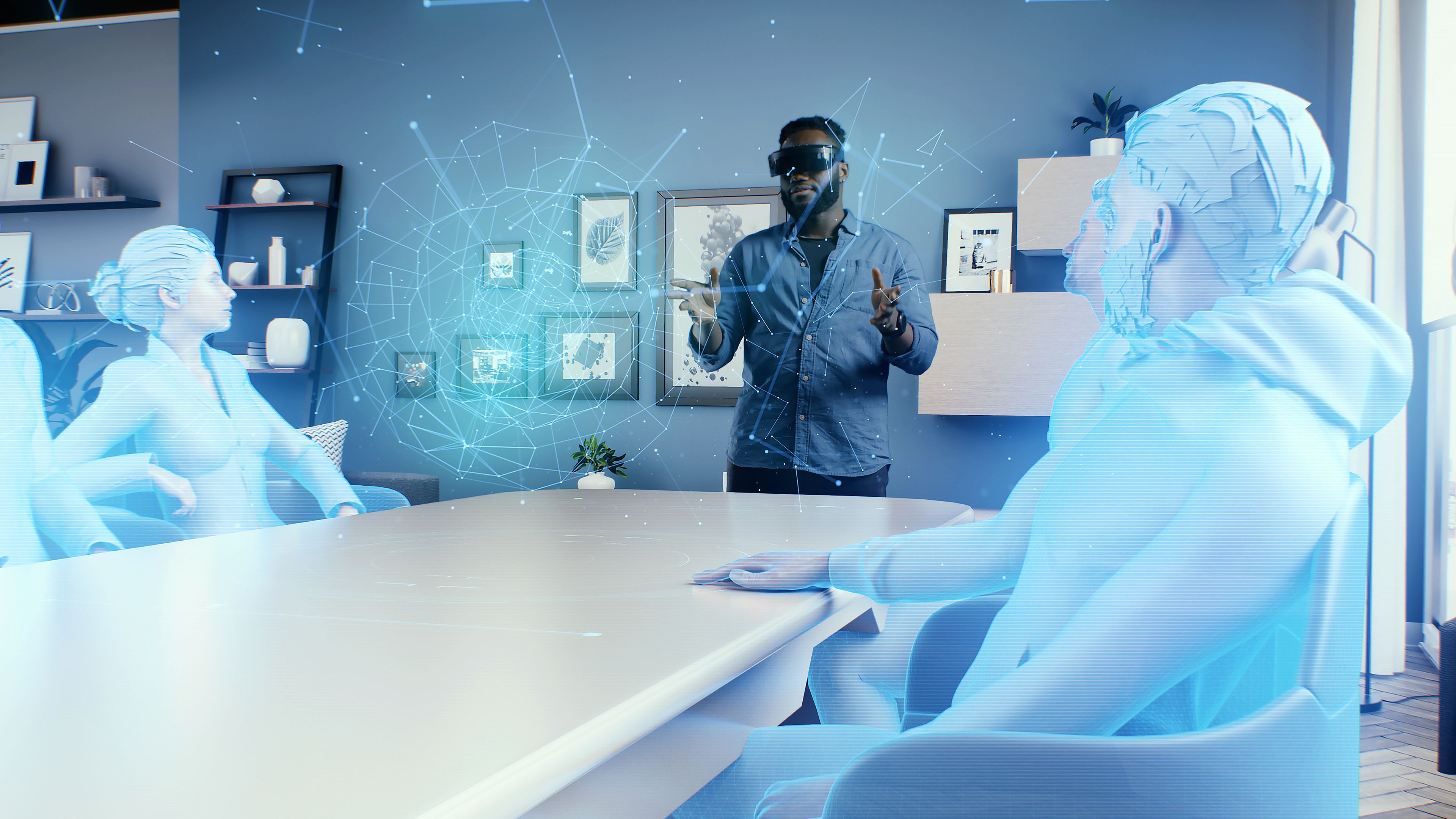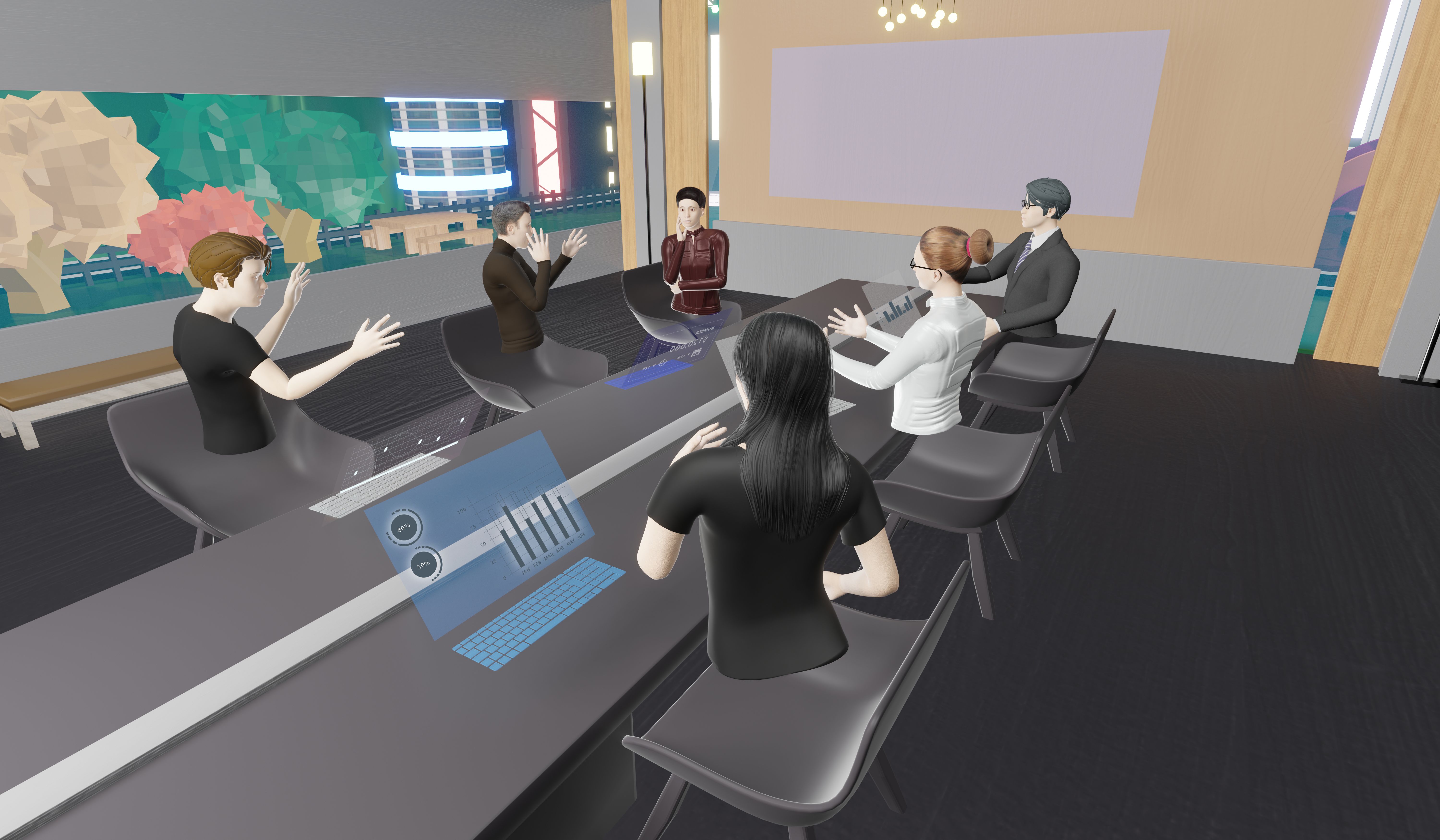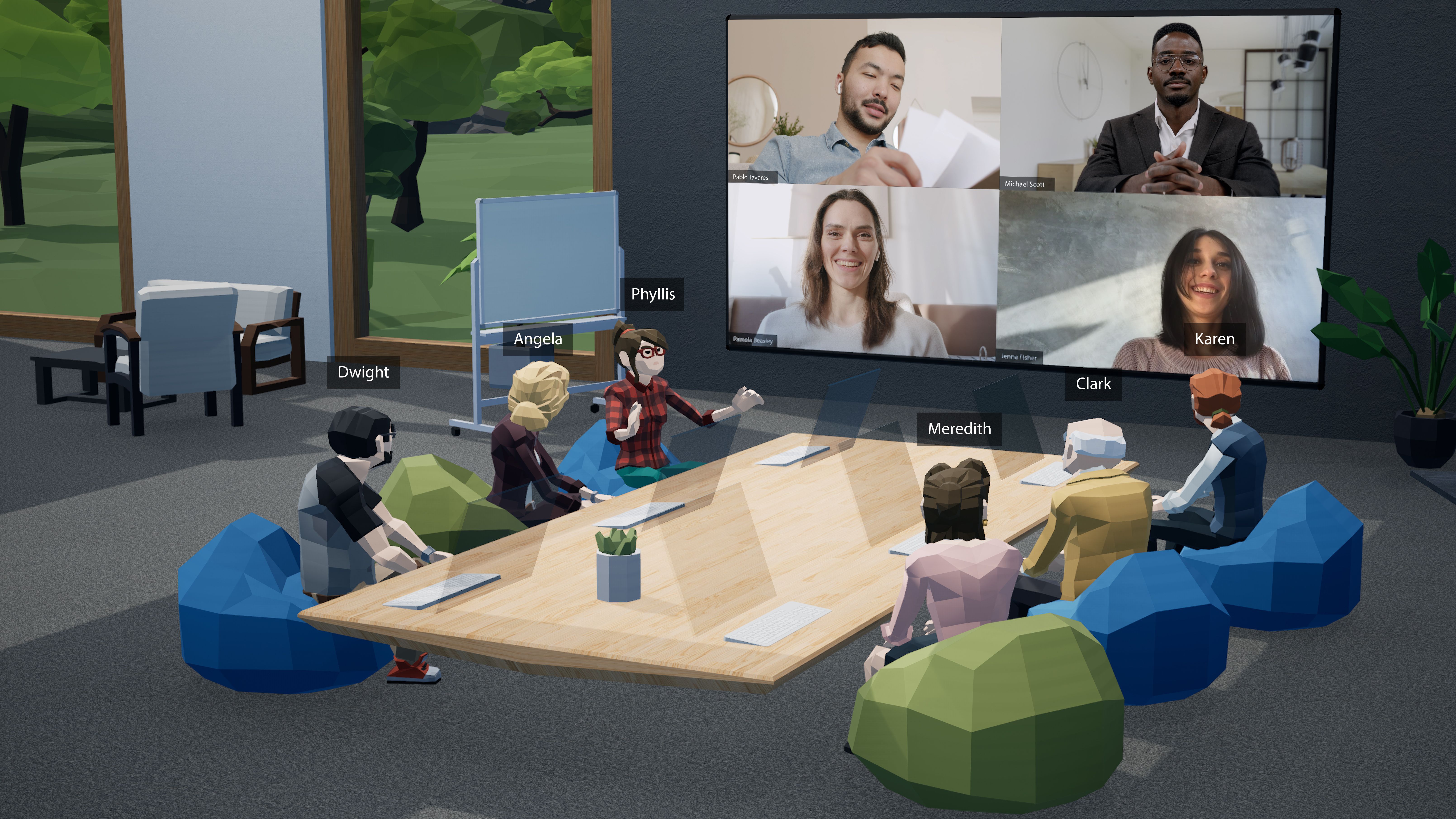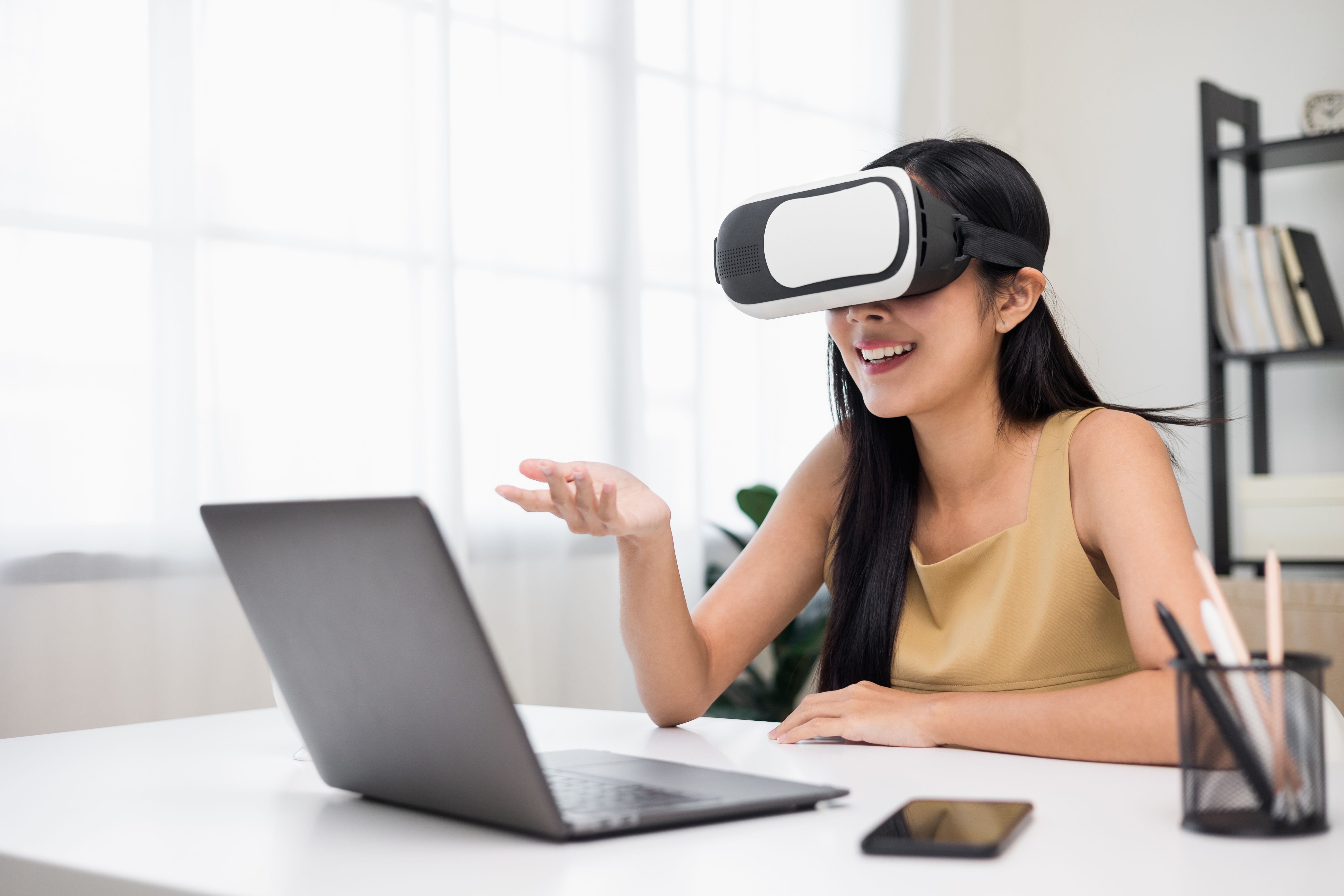Virtual Reality is no longer just a thing of the future. It is now being used in business meetings all over the world to help make communication and collaboration easier. VR technologies are utilized to develop training initiatives for employees and generate leads, conversions, and loyal customers. Here are five ways that VR can be used in your next business meeting.
What Is Virtual Reality, and How Can It Be Used in a Business Context?
Virtual Reality (VR) is a simulated experience similar to or completely different from the real world, depending on the case. Virtual reality applications currently include entertainment, mainly video games, education, health care, military, design, manufacturing, and online commerce.
VR is an immersive technology, comparable to augmented reality (AR) and mixed reality (XR).
Virtual reality is created using computer technology, typically in the form of an immersive environment that appears three-dimensional (3D) and provides a stimulating experience for users by engaging human senses, such as sight, hearing, or touch.
Virtuality, interactivity, and immersion are inherent to VR technologies. Consequently, users feel they're inside an entirely new world using virtual reality devices. For instance, in the metaverse, users can enhance their ability to interact with virtual objects and even purchase services or products.
Most virtual reality systems require the use of special head-mounted displays that provide separate images for each eye and integrate with other input devices, such as gloves or controllers, to allow the user to interact with the virtual environment.
Some systems also use eye-tracking technology to improve the user experience by reducing excessive vergence-accommodation demand. For instance, these systems can reduce the need for the eyes to converge at a single point in space.
VR systems can use sensors to track body movements and emotional responses to further enhance the realism of the virtual experience.
Virtual Reality: What Does This Term Mean?
The term "virtual reality" refers to an artificial environment that is created using computer software and presented in such a way that it appears and feels like a real environment.
Since the late 1980s, VR technologies have been utilized for both entertainment and practice purposes. Early examples of VR entertainment included flight simulators and arcade games that used head-mounted displays, followed by home video game consoles with 3D graphics capability.
More recently, virtual reality has been used to create realistic training simulations for pilots, soldiers, and surgeons, manage product and sales meetings and give remote product presentations.
The Advantages of Using Virtual Reality in a Business Environment
While virtual reality has traditionally been used for entertainment purposes, it is also beginning to be used more frequently in business settings. VR can be used for everything from training employees to holding virtual meetings.
One of the key advantages of VR is that it allows businesses to save time and money. For example, businesses can now hold the meeting virtually instead of flying employees to another location for a meeting, saving both time and travel costs.
Additionally, VR can be used for employee training. Rather than spending time and money on traditional classroom training, businesses can use VR to provide employees with an immersive learning experience.
Some companies have started using virtual reality to give product and sales presentations remotely. This has several benefits over traditional presentations. For one, it allows the presenter to control the environment and show the customer exactly what they are selling.
It allows customers to explore products in a more immersive way. Consequently, business presentations that use VR technologies reduce distractions and engage attendees, generating leads, conversions, and loyal clients.
As VR technology continues to evolve, more businesses will likely begin to explore its potential uses. Virtual reality can revolutionize how businesses operate and allow employees to work from anywhere in the world.
If you're searching for a method to elevate the quality of your material, 3DFrame is worth it. 3DFrame's virtual worlds are so realistic and immersive that your audience will be both engaged and amazed. So why wait? Learn more about 3DFrame.
How to Prepare For Your Next VR Presentation?
When giving a presentation, it's important to be prepared for anything. This includes being ready for a VR presentation. If you want to give your audience an immersive experience, follow these tips to ensure you're ready for anything.
Make sure your computer can handle the graphics requirements of VR. Most virtual reality presentations require a high-end graphics card and plenty of RAM.
Make sure you have the proper software installed on your computer. Many VR presentations use special software that needs to be installed in order to run correctly.
Before giving your presentation, ensure you are familiar with the software and how it works. Nothing is worse than being unprepared and having technical difficulties during your presentation.
Test out the equipment beforehand to make sure everything is working correctly. Nothing is more frustrating than trying to give a presentation and having technology fail you. Try out different types of VR headsets to find the one that works best for you. You will discover how some headsets are more comfortable than others, and some provide a better experience overall.
How to Wow Your Audience With Virtual Reality: 5 Tips to Hold Fantastic Business Meetings
Here is our list of five tips to amaze your audience with VR technologies during business meetings for sales or explaining your company's best products.
Tip #1. Introduce New Products or Services With a Virtual Reality Demonstration
Virtual reality is an increasingly popular way to introduce new products and services. By immersing potential customers in a 3D environment, businesses can give them a real taste of what they have to offer.
In addition, VR can help to build rapport with potential customers and create a more personalized sales experience.
Tip #2. Give Potential Customers a Virtual Tour of Your Business or Office
Virtual reality has been around for a while now, but it's only recently that the technology has become affordable and accessible to businesses of all sizes. VR can be used for a variety of purposes, but one of the most popular applications is giving potential customers a virtual tour of your business or office.
This is especially helpful for businesses that are selling products or services remotely. With a virtual reality sales presentation, customers can get an immersive, three-dimensional look at your products and office space. As a result, you'll have a great way to increase sales and close more deals.
Tip #3. Hold Virtual Team Meetings and Brainstorming Sessions
Remote team meetings and brainstorming sessions are an increasingly popular way to conduct business, as they allow for greater flexibility and a wider range of participants. However, ensuring that these meetings are effective is important to get the most out of them.
One way to do this is to use VR technologies to create a 3D presentation of the meeting space. This allows all attendees to see the same thing simultaneously and can be particularly useful for remote sales or product presentations.
Tip #4. Train Employees With Virtual Reality Meetings
VR meetings are becoming increasingly popular as training tools for employees. By using a 3D presentation, employees can be placed in a simulated work environment and asked to perform tasks or solve problems. This allows them to experience the work environment without the risk of injury or damage to equipment.
Virtual reality meetings can also be held to teach sales or product presentation skills. For instance, by seeing the product in a realistic 3D environment, remote employees can learn about the features and benefits of the product before they even step into a hybrid sales environment. Additionally, VR meetings offer a safe and effective way to train employees and prepare them for success in the workplace.
Tip #5. Make Presentations More Engaging and Interesting With Virtual Reality
Most people dread giving presentations, but with a little bit of creativity, you can make them more engaging and interesting. One way to do this is by using virtual reality technologies. VR can be utilized to create immersive, three-dimensional presentations that will capture your audience's attention.
In addition, VR can also be used to create interactive experiences that will keep your audience engaged from start to finish.
For example, Vection Technologies offers you VR solutions to create a 3D remote presentation to foster sales or simply explain the benefits of your products to potential clients. In this case, 3D Frame will allow you to create an immersive presentation to bring high-quality content to attendees and showcase the potential of what you are offering.
Takeaway
Virtual reality is still a relatively new technology, but it’s quickly gaining traction in business circles. If you want to stay ahead of the curve, then start using VR in your next meeting. It can help you make a great impression on clients and colleagues alike. Just be sure to follow these tips for holding successful virtual presentations.
3DFram allows you to build virtual reality simulations where users can explore and experience your content. With its first-of-its-kind integration of metaverse technology into Webex, users can now engage with meeting participants in a whole new way. 3DFrame will transport you to the meeting, whether you're in your office or on the move. You'll feel as though you're right there in the room with everyone else, thanks to 3DFrame! Give it a try today and see how it can take your meetings to the next level!



